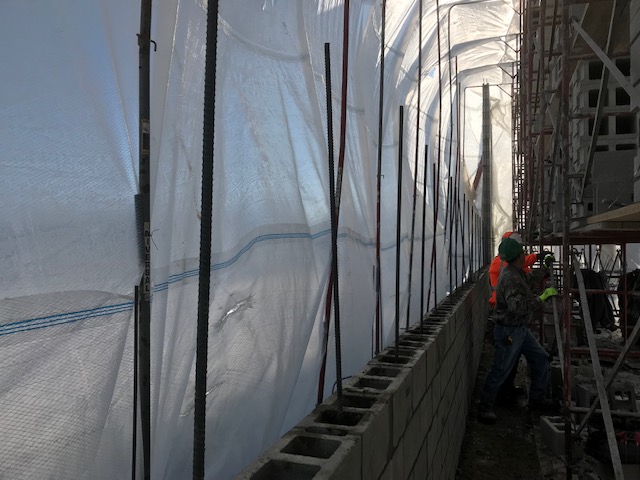
Masonry contractors typically would prefer to install masonry in high lifts. High lift grouting tends reduce costs because less reinforcing steel is wasted in lapping the reinforcing steel. High lift grouting typically allows the mason to install CMU much faster than low lift grouting. Also, there are some benefits structurally such as reducing the amount of cold joints within the masonry wall.
According to the MSJC specifications, Grouting can be done in lifts not exceeding 12 foot 8 inches provided that the following conditions are met:
- Masonry has cured for at least 4 hours.
- The grout slump needs to be between 10 to 11 inches.
- There are no intermediate bond beams between the top and bottom of the pour height.
Also, the MSJC code allows you to vary from the high lift specifications provided that a demonstration panel has been constructed to successfully demonstrate the proposed alternative works.
However, the project specifications should be reviewed prior to high lift grouting. Many project specifications do not allow high lift grouting or require submittals to be reviewed by the structural engineer regarding the materials and methods for high lift grouting such as the grout mix design that will be used.
If the contractor is allowed to perform high lift grouting, the masonry should be inspected thoroughly prior to placing the grout. Cleanouts should be installed at each cell containing reinforcing steel at the base of the wall and spaced no greater than 32 inches. The inspector should check each cleanout to verify that all debris has been removed. The inspector should also verify that all reinforcing steel has been placed prior to grouting.



